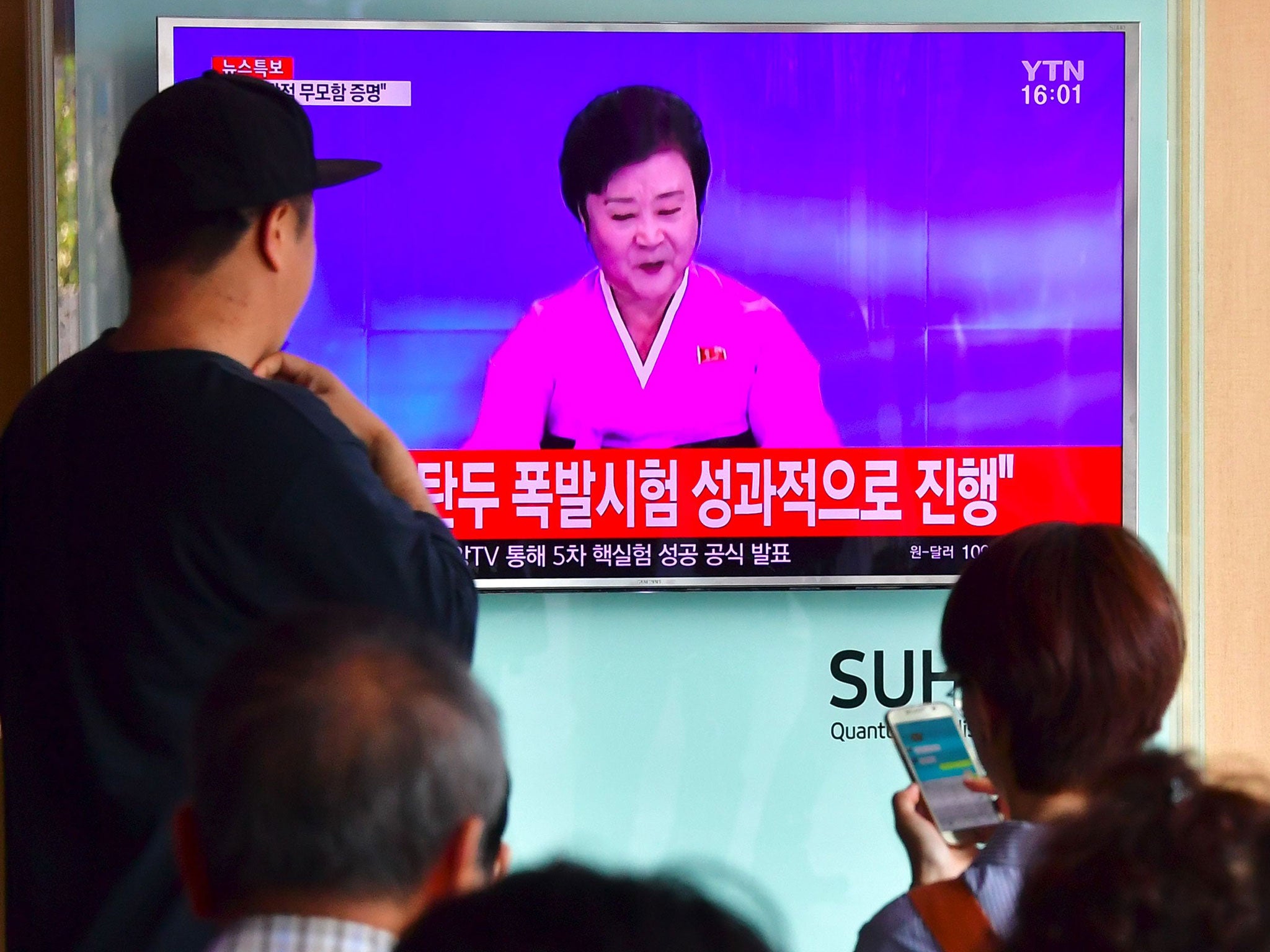North Korea nuclear test as it happened: Monitoring agency chief labels explosion that caused earthquake 'frightening'
The latest updates as North Korea tests nuclear warhead with massive explosion

Your support helps us to tell the story
This election is still a dead heat, according to most polls. In a fight with such wafer-thin margins, we need reporters on the ground talking to the people Trump and Harris are courting. Your support allows us to keep sending journalists to the story.
The Independent is trusted by 27 million Americans from across the entire political spectrum every month. Unlike many other quality news outlets, we choose not to lock you out of our reporting and analysis with paywalls. But quality journalism must still be paid for.
Help us keep bring these critical stories to light. Your support makes all the difference.
North Korea says it has conducted its latest major nuclear test and claims to have the capabilities to mount a warhead on ballistic missiles. Here are the latest updates:
- The test is the country's fifth and largest so far
- Alarm over claim nuclear weapon can be loaded on missile
- How worried should the world be?
- UN Security Council calls emergency meeting
- It caused an 'artificial' magnitude 5 earthquake
- Nuclear monitoring organisation calls test 'frightening'
- Neighbouring South Korea accuses North of 'fanatic recklessness'
- China says it 'resolutely opposes' ally's actions
Please allow a moment for the live blog to load
North Korea claims to have conducted a “higher level” explosion of a nuclear warhead in a test that will allow it to finally build an array of stronger, smaller and lighter nuclear weapons.
It is Pyongyang's fifth atomic test and the second in eight months, generating a magnitute 5 earthquake sparking alarm in neighbouring South Korea and around the world.
South Korea's president called the detonation, which Seoul estimated as the North's biggest-ever explosive yield, an act of “fanatic recklessness.”
While the North is known to have a small stockpile of nuclear warheads, experts are divided about its ability to mount them on a working missile delivery system that could allow a long-range strike.
If minaturisation has been achieved, it will raise serious concern over the capability of the totalitarian government to realise years of threats aimed at the US and other enemies.
North Korea's state media agency said the test had “finally examined and confirmed the structure and specific features of movement of (a) nuclear warhead that has been standardised to be able to be mounted on strategic ballistic rockets", adding: “The standardisation of the nuclear warhead will enable (North Korea) to produce at will and as many as it wants a variety of smaller, lighter and diversified nuclear warheads of higher strike power."
The claims by Kim Jong-un's government have not been verified but China, the country's main diplomatic ally, cautioned against "adding fuel to the flames" in state-run media.
Park Geun-hye, the South Korean President, spoke with Barack Obama over the test on Friday morning and said her government would increase pressure on its neighbour to stop violating international sanctions.
South Korea's weather agency said the explosive yield of the North Korean blast would have been 10 to 12 kilotons, or 70 to 80 percent of the force of the 15-kiloton atomic bomb the United States dropped on the Japanese city of Hiroshima in 1945.
Subscribe to Independent Premium to bookmark this article
Want to bookmark your favourite articles and stories to read or reference later? Start your Independent Premium subscription today.
Join our commenting forum
Join thought-provoking conversations, follow other Independent readers and see their replies
Comments